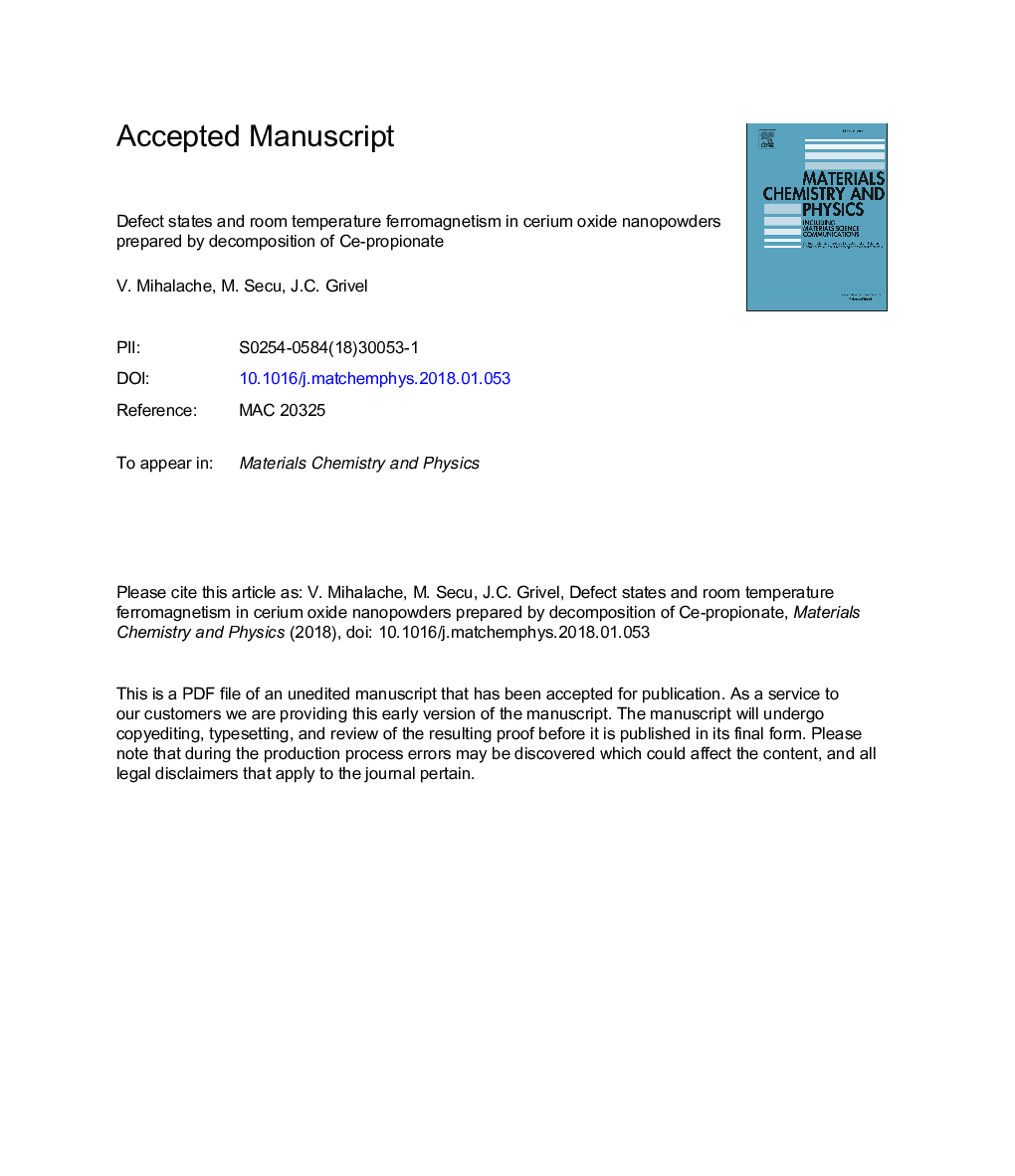| کد مقاله | کد نشریه | سال انتشار | مقاله انگلیسی | نسخه تمام متن |
|---|---|---|---|---|
| 7921906 | 1511754 | 2018 | 38 صفحه PDF | دانلود رایگان |
عنوان انگلیسی مقاله ISI
Defect states and room temperature ferromagnetism in cerium oxide nanopowders prepared by decomposition of Ce-propionate
ترجمه فارسی عنوان
فرومغناطیس دما و دمای اتاق در نانوپودرهای اکسید سریم تهیه شده توسط تجزیه سدیم پروپیونات
دانلود مقاله + سفارش ترجمه
دانلود مقاله ISI انگلیسی
رایگان برای ایرانیان
موضوعات مرتبط
مهندسی و علوم پایه
مهندسی مواد
مواد الکترونیکی، نوری و مغناطیسی
چکیده انگلیسی
Four batches of cerium oxide powders (with nanocrystallite size of 6.9â¯nm-572â¯nm) were prepared from four precursor nanopowders by thermal decomposition of Ce-propionate and annealing in air between 250â¯Â°C-1200â¯Â°C for 10â¯min-240â¯min. Ceria formation reactions, structure, vibrational, luminescence and magnetic properties were investigated by differential scanning calorimetry, x-ray diffraction, electron microscopy, infrared spectroscopy, photoluminescence and SQUID. All the samples exhibit room temperature ferromagnetism, RTFM, (with coercivity, Hc, of 8â¯Oe - 121â¯Oe and saturation magnetization, Ms, of up to 6.7*10â3 emu/g) and a broad defect-related photoluminescence, PL, emission in the visible range. The samples derived from the same precursor show Ms proportional to the peak area of defect-related PL emission whereas this is not valid for the samples derived from the different precursors. An improvement of ferromagnetism and intensity of defect-related PL emission was observed when annealing the products in which nanocrystalline cerium oxide coexists with Ce - oxicarbonate traces, Ce2O2CO3. The experimental results were explained based on the following considerations: room temperature ferromagnetism was induced by the defective ceria with high concentration of oxygen vacancies generated by decomposition of Ce-propionate; oxygen vacancies of the starting precursor nanopowders could be redistributed (at the surfaces/grain boundaries, GBs) upon heating under conditions that promote an inert local environment; the decomposition of Ce2O2CO3 residues can provide an excess of oxygen vacancies at the nanoparticles surfaces or GBs, which can induce or enhance ferromagnetism; surfaces/GBs rather than bulk defects appear responsible for RTFM - this can explain the (often reported in literature) inconsistency between oxygen vacancies concentration and Ms.
ناشر
Database: Elsevier - ScienceDirect (ساینس دایرکت)
Journal: Materials Chemistry and Physics - Volume 209, 15 April 2018, Pages 121-133
Journal: Materials Chemistry and Physics - Volume 209, 15 April 2018, Pages 121-133
نویسندگان
V. Mihalache, M. Secu, J.C. Grivel,
